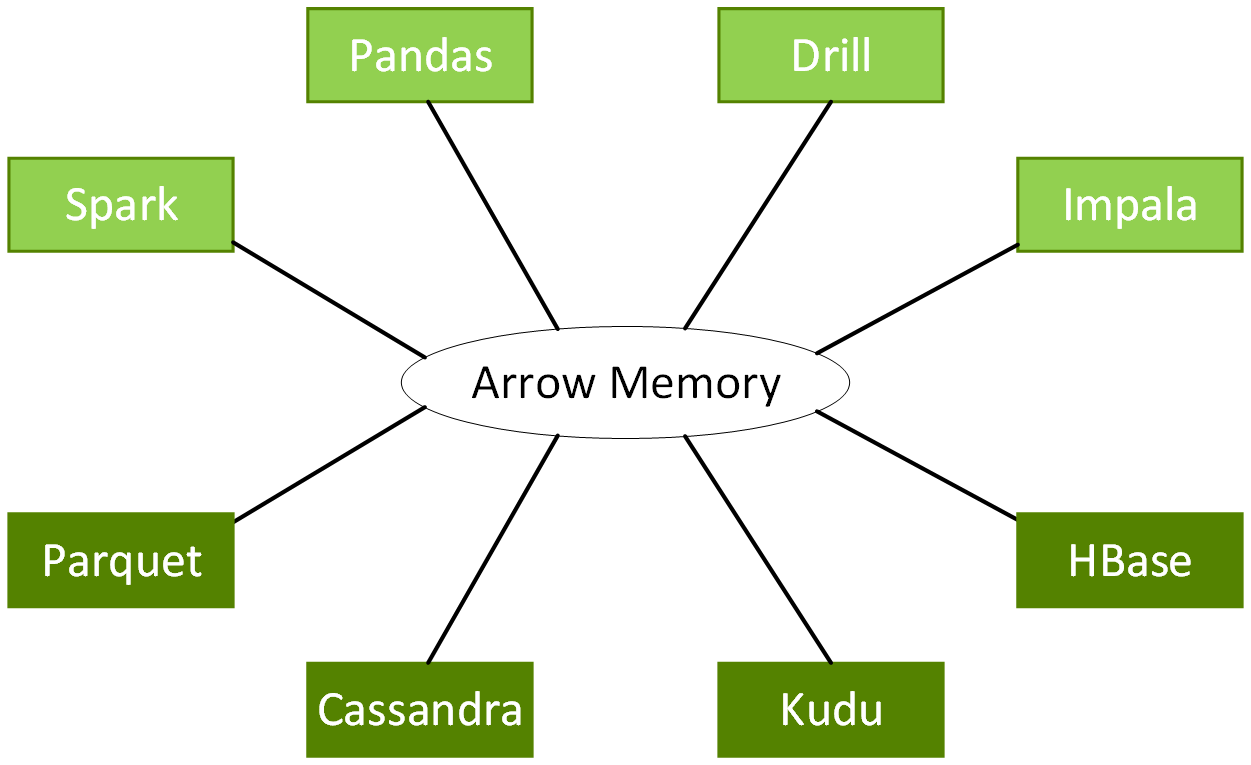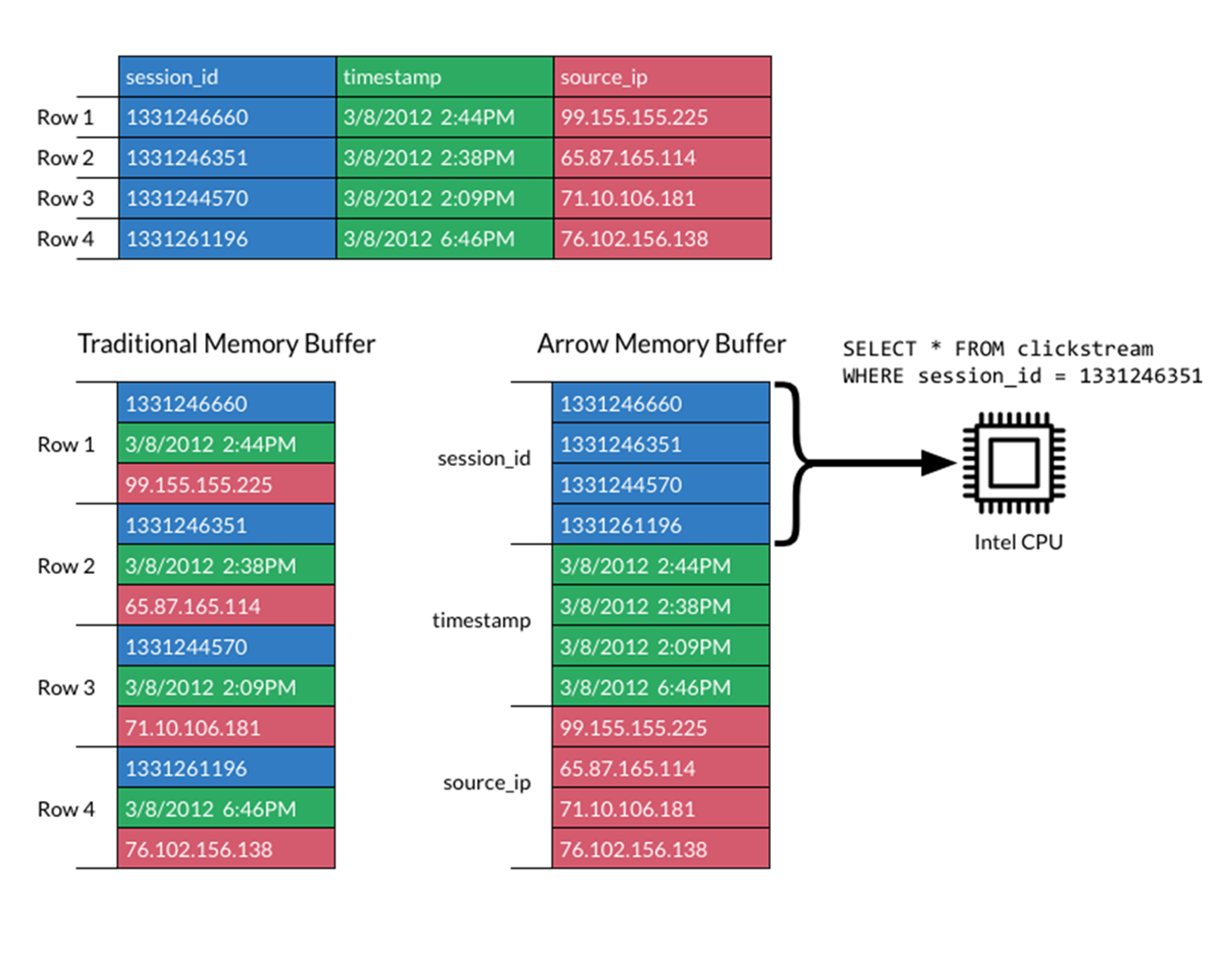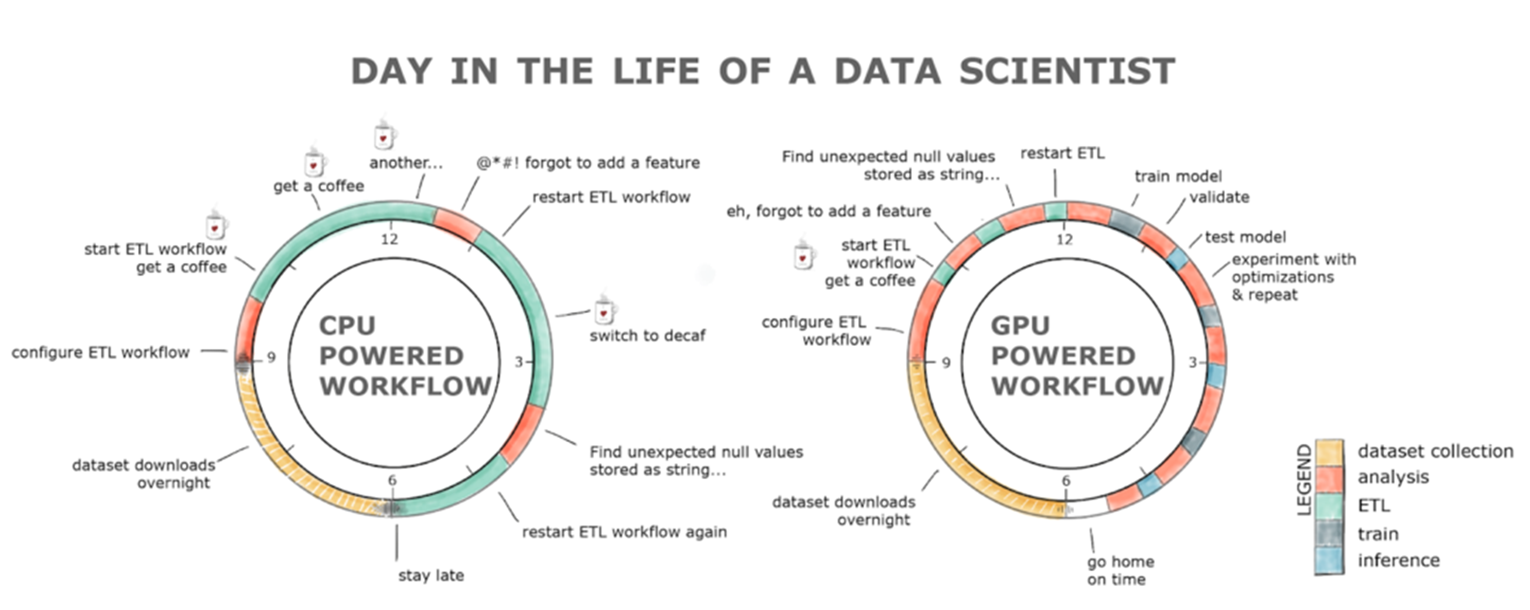A key component of data science is data exploration. Preparing a data set for ML requires understanding the data set, cleaning and manipulating data types and formats, and extracting features for the learning algorithm. These tasks are grouped under the term ETL. ETL is often an iterative, exploratory process. As data sets grow, the interactivity of this process suffers when running on CPUs.
GPUs have been responsible for the advancement of deep learning (DL) in the past several years, while ETL and traditional ML workloads continued to be written in Python, often with single-threaded tools like Scikit-Learn or large, multi-CPU distributed solutions like Spark.
RAPIDS is a suite of open-source software libraries and APIs for executing end-to-end data science and analytics pipelines entirely on GPUs, achieving speedup factors of 50X or more on typical end-to-end data science workflows. RAPIDS accelerates the entire data science pipeline, including data loading, enabling more productive, interactive, and exploratory workflows.
Built on top of NVIDIA® CUDA®, an architecture and software platform for GPU computing, RAPIDS exposes GPU parallelism and high-bandwidth memory speed through user-friendly APIs. RAPIDS focuses on common data preparation tasks for analytics and data science, offering a powerful GPU DataFrame that is compatible with ApacheArrow data structures with a familiar DataFrame API.
Apache Arrow specifies a standardized language-independent columnar memory format, optimized for data locality, to accelerate analytical processing performance on modern CPUs or GPUs, and provides zero-copy streaming messaging and interprocess communication without serialization overhead.


The DataFrame API integrates with a variety of ML algorithms without incurring typical serialization and deserialization costs, enabling end-to-end pipeline accelerations.

By hiding the complexities of low-level CUDA programming, RAPIDS creates a simple way to execute data science tasks. As more data scientists use Python and other high-level languages, providing acceleration with minimal to no code change is essential to rapidly improving development time.